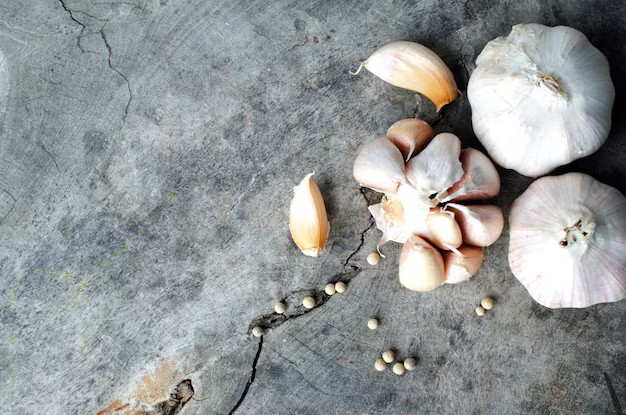How to Properly Store Garlic: Should It Go in the Refrigerator?
Garlic, with its distinctive aroma and flavor, is a staple in cuisines around the world. It transforms simple dishes into phenomenal meals, adding depth and finesse. Yet, despite its widespread use, there’s a burning question that perplexes many home cooks: Does garlic go in the refrigerator? Let’s journey through the world of garlic storage, uncover its nuances, and equip you with practical insights for preserving its quality and flavor.
The Basics of Garlic Storage
Understanding Garlic: A Culinary Gem
Before diving into whether garlic belongs in the refrigerator, it's helpful to understand what garlic is and how it behaves. Garlic is a bulbous plant related to onions, leeks, and shallots. It comprises individual cloves, each encased in papery skin. When used fresh, garlic is known for its pungency, which becomes milder when cooked.
General Storage Guidelines for Whole Bulbs
The optimal storage conditions for garlic can vary based on its form—whole bulbs, separated cloves, minced, or otherwise processed. However, for whole garlic bulbs, the consensus is clear: Garlic prefers a cool, dry place.
- Temperature: Ideal storage temperatures range from 60-65°F (15-18°C).
- Humidity: Low humidity is essential, as excessive moisture can lead to mold and sprouting.
- Ventilation: An airy container, like a wire basket or mesh bag, helps ensure good airflow around the bulbs.
How the Refrigerator Affects Garlic
Garlic's penchant for cooler environments may lead one to assume the refrigerator is a suitable storage spot. However, refrigeration can have unintended effects:
- Sprouting: Cold temperatures can prompt garlic to sprout, producing green shoots that are often bitter.
- Texture Change: Refrigeration can alter garlic's texture, leading to rubbery or mushy cloves.
- Moisture: The higher humidity levels inside a fridge can increase mold risk.
Hence, while refrigeration might sound logical, it actually accelerates spoilage, loses flavor, and affects texture.
Considerations for Different Forms of Garlic
Individual Cloves
For separated cloves, the same storage rules apply: maintain them at room temperature in a dry, ventilated environment. If you find yourself with an abundance of loose cloves, consider freezing them rather than refrigerating.
Chopped or Minced Garlic
Once garlic is cut, its shelf life diminishes. Chopped or minced garlic should be stored in the refrigerator, preferably in an airtight container to minimize odor spreading and preserve freshness for up to a week. For longer storage, the freezer is more suitable, especially when mixed with a bit of oil before freezing.
Garlic in Oil
Garlic-infused oil is a popular additive, but it demands careful handling. Botulism risk is a concern when garlic is stored in oil at room temperature. Always keep garlic oil mixtures refrigerated and consume them quickly.
Proper Storage Techniques
Traditional Storage
- Braiding: Some enthusiasts keep garlic by braiding the papery stalks and hanging them in a cool location. This keeps them aerated and visually appealing.
- Cellar Storage: If you have a root cellar, it's an ideal place due to its dry and cool nature.
Freezing Garlic
Freezing is a practical alternative for preserving garlic's integrity. You can freeze:
- Whole Cloves: Peel and freeze them individually, so you can use as needed.
- Pureed Garlic: Blend with oil, then freeze in ice cube trays for convenient portions.
Note: Thawed garlic works well in cooked dishes, though it may not be ideal for raw applications due to slight changes in texture.
Enhancing Garlic Longevity
DIY Garlic Solutions
If you're concerned about spoilage, consider these handy tips:
- Dehydration: Dry sliced or minced garlic at low heat until completely dehydrated. This extends shelf life significantly.
- Pickling: Preserve cloves in vinegar or brine. This method adds zest and extends use considerably.
Recognizing Spoilage
Knowing how to spot the signs of bad garlic prevents culinary mishaps:
- Visual Clues: Look for green sprouts, black spots, or mold.
- Smell Test: Discard onions emitting off, sour, or acrid odors.
- Texture Feel: Mushy or slimy garlic is past its prime.
Quick Reference Guide: Garlic Storage Tips
Here's a concise guide to help you store garlic optimally:
- 🌡️ Whole Bulbs: Store in a cool, dry, ventilated area, away from direct sunlight.
- ❌ Avoid Refrigeration: Reduces shelf life due to sprouting and moisture issues.
- 🏺 Individual Cloves: Store similar to whole bulbs, freeze if needed.
- 🧊 Chopped or Minced: Refrigerate and use within a week, or freeze for longer storage.
- 🚫 Oil Mixtures: Always refrigerate garlic oils due to botulism risk.
- 📅 Check Regularly: Inspect stored garlic for spoilage indicators.
Bringing It All Together
Cooking with garlic elevates flavors and nourishes the soul, but proper storage is vital to maintaining its essence. While the refrigerator might seem like a safe haven for many perishables, garlic thrives best outside of it, cradled by the gentle embrace of cool, dry air. Whether you're preparing vibrant garlic-infused dishes today or planning to savor garlic weeks from now, these storage strategies will ensure every clove is perfectly preserved, ready to enhance your culinary creations.
The journey of understanding garlic storage is simple yet rewarding. By applying thoughtful practices, you’re not only preserving garlic but also ensuring your meals brim with flavor and finesse. Remember, the art of storing garlic reflects the broader art of cooking—balancing flavor, preparation, and timing for the best results. Happy cooking!
